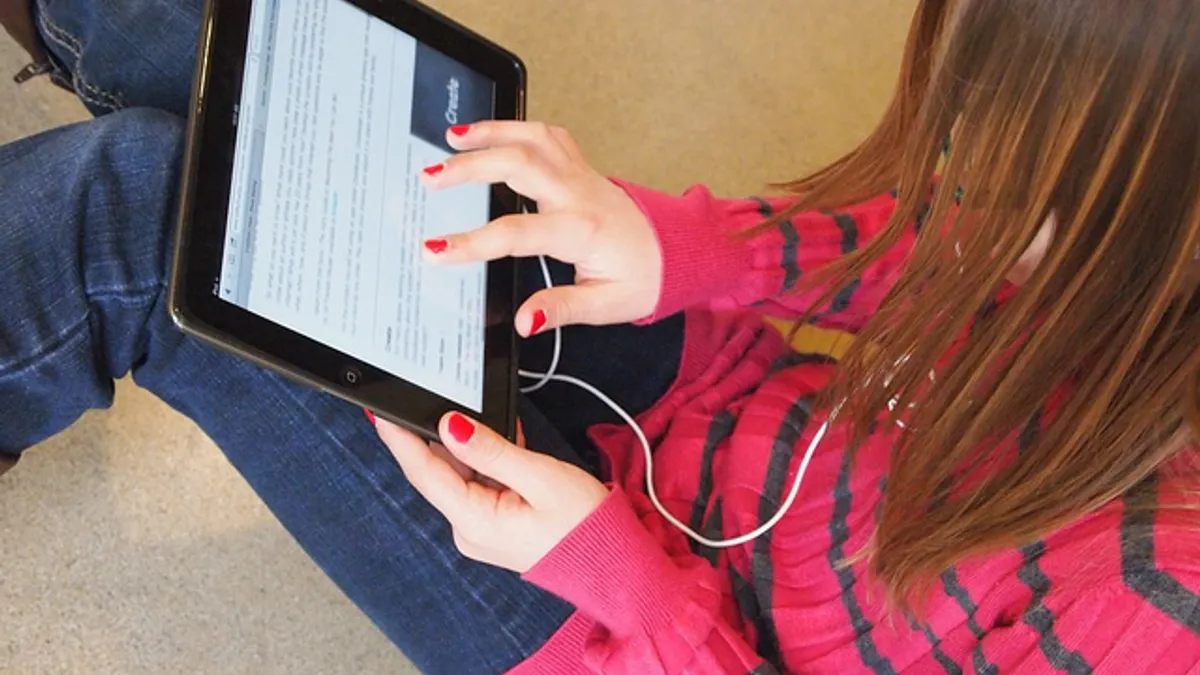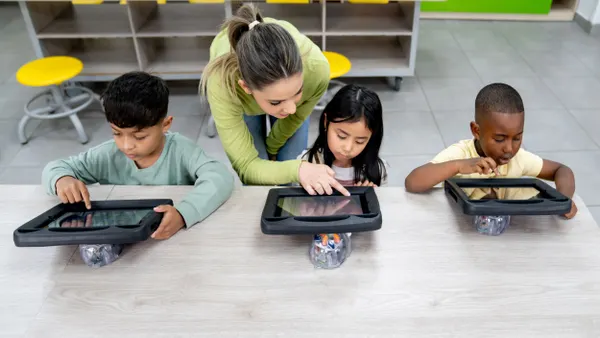Dive Brief:
- A 2017 CoSN infrastructure survey saw 40% of district technology officials report that their schools had a 1:1 device ratio for students. Now with another 43% expecting to hit those numbers in three years and the number of students regularly taking a device home on the rise, EdTech: Focus on K-12 reports that it's increasingly important to keep parents in the loop as much as teachers and students.
- When parents understand the technology their children are using and are regularly updated via avenues like social media and school events, device initiatives are more likely to succeed.
- It's also important, however, that technology doesn't replace personal interactions between parents and educators, and parent-teacher conferences can provide an opportunity for educators to show parents how technology use fits into a curriculum map and where their child is in that process.
Dive Insight:
In the device rollout process, it's important to keep in mind that many parents might be in the same boat as some educators who haven't used specific technology before and are unsure of how it fits into the classroom overall. And with that lack of direct experience, parents can also bring concerns to the table about what information various applications gather about their child and how that data is safe-guarded.
By providing overviews on social media and school websites, as well as parent nights that provide a hands-on look at devices and applications in use, schools and districts can ease parents' concerns and help them become more comfortable. The latter can be especially important when it comes to, say, helping a child with a homework assignment.
Ultimately, building and maintaining that parental trust can go a long way in raising the success rate of a device program.














